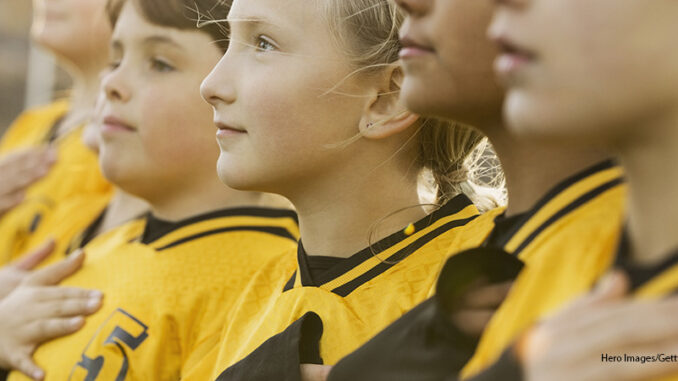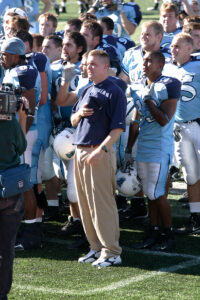
Last week, btw took a closer look at the grievance that professional football player Colin Kaepernick filed against the NFL, accusing teams of working together to refuse to give him a contract in order to punish him for performing peaceful protest (“taking a knee”) during the national anthem before games. (Kaepernick, a former quarterback for the San Francisco 49ers, was protesting police brutality against unarmed black men.) Then, over Labor Day weekend, a Nike ad featuring Kaepernick’s face, with the caption “Believe in something. Even if it means sacrificing everything,” has gone viral, prompting boycotts, countless memes, and even an angry rebuttal from President Trump. It’s also caused Nike stock to increase by more than 30 percent.
Certainly, the debate about whether or not it’s disrespectful to take a knee during the national anthem at sporting events (or anywhere else) is far from over. But have you ever wondered how the national anthem got linked up with sports in the first place? Here, btw examines this question.
Early Beginnings
Singing the national anthem before sporting events is something we take as given. But most of the time, we don’t sing it before other events, such as school or work or concerts or extracurricular meetings. So why the pairing of patriotism with sports? Turns out, there’s a specific date when it actually began: May 15, 1862 in Brooklyn, New York. A new ballfield was being dedicated, and so a band was invited to play as part of the celebration. 1862 was during the Civil War, and back then, patriotic songs were popular. So the band played “The Star Spangled Banner,” and a tradition was born.
Sports, War, and Patriotism

Credit: ©Lars A. Niki
From that point on, throughout the rest of the 1800s, the national anthem was sung at baseball games, but only on opening day. Fast forward to the 1918 World Series: the game was dull and the weather was bad, and the nation was engaged in World War I, which meant that patriotic feelings were running high. The band played the song during the seventh inning, and it immediately revived the crowd, bringing everyone together and infusing the game with new energy. And so it went that the song was played at baseball games from then on.
During the 1920s, two things helped the national anthem spread to other sports, like football, as well. The first was the use of the public address system. And the second was that the United States was gearing up to enter World War II, meaning that it was another time of great patriotism. The song became the official national anthem in 1931, and was played at the beginning of movies. After that, people began to expect to hear it at the start of sporting events as well.
Tradition and Protest
It’s important to note that Kaepernick is not the first sports figure to protest the national anthem. At the 1968 Mexico City Summer Olympics, as African American athletes Tommie Smith and John Carlos received their medals in the 200-meter dash, they raised their fists during the anthem in the black power salute. While very controversial at the time, the photograph of this protest has become one of the iconic images of peaceful protest in American history.
